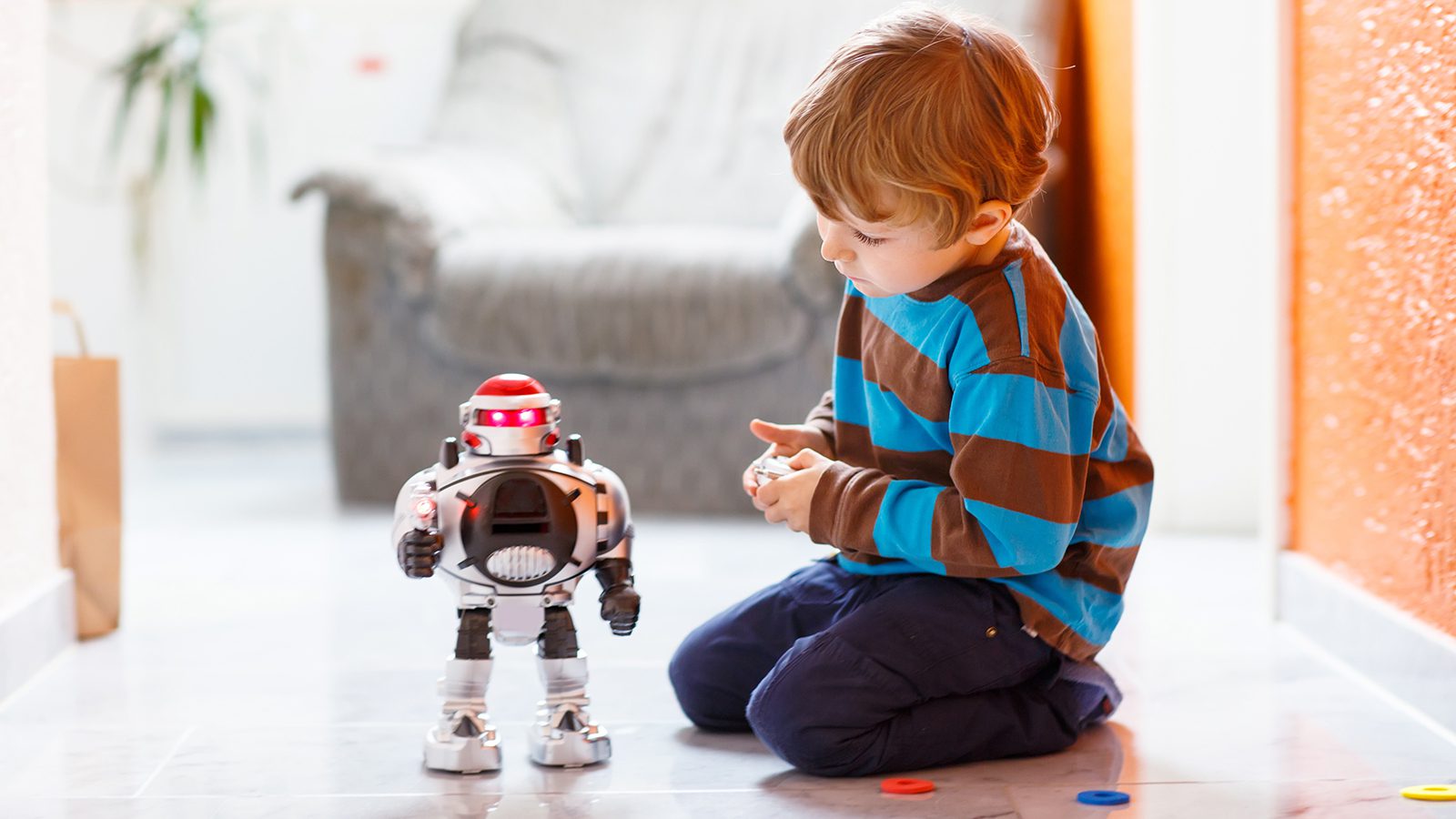Socially assistive robots are teaching children on the autism spectrum the skills they need.
Socially assistive robots have been a significant part of autism therapy research for nearly two decades. These robots receive special programming to aid autistic children with autism in developing a range of skills, including social, emotional, communication, and cognitive abilities. These robots’ unique combination of simplicity, exaggeration, consistency, and predictability makes them an effective tool in enhancing the engagement of children with autism.
Moreover, socially assistive robots serve as a bridge between the technological and social worlds, providing a unique learning environment that is engaging and comfortable for children with autism. They offer a human-like interaction that is less complex and dynamic, making it easier for children to practice and learn new skills.
The use of socially assistive robots in autism therapy is a testament to the potential of technology in revolutionizing therapeutic approaches and creating more inclusive and effective learning environments. The impact of these robots extends beyond education, offering children with autism a valuable tool to navigate their day-to-day life.
9 Ways Socially Assistive Robots Help Autistic Children Develop Better Skillsets
1 – Robots May Improve Engagement
One of the most noticeable impacts of socially assistive robots on children with autism is the improvement in their engagement. With their predictable and consistent responses, robots can enhance the attention and engagement of children with autism.
Several studies have shown that children with autism exhibit better engagement and longer gaze duration when interacting with robots than human caregivers. This engagement happens primarily because robots can provide a non-threatening and controlled environment that allows children to interact at their own pace, thereby reducing the pressure and enhancing their engagement.
2 – Reduced Anxiety and Disruptive Behaviors
The predictable nature of robots plays a crucial role in alleviating the anxiety often associated with unpredictable social interactions. For children with autism, who often find it challenging to navigate the complexities of social interactions, the consistency and predictability of robots provide a sense of comfort and control.
This anxiety reduction can lead to fewer stereotypical behaviors, such as repetitive movements or speech patterns, and more extended periods of sustained interaction. By providing a stable and predictable learning environment, robots can help children with autism to focus better on the task at hand and reduce disruptive behaviors.
3 – Increased Joint Attention
Robots can also facilitate joint attention between the child and the human caregiver, a critical aspect of learning. Joint attention refers to the shared focus of two individuals on an object or activity and is crucial for social development and communication. Robots can create a collaborative and triangular learning interaction between the child, the human caregiver, and themselves.
This interaction not only helps the child to focus on the learning activity but also aids in generalizing the learning to human-to-human interaction. In other words, the skills learned while interacting with the robot can be transferred to human interactions.
4 – Improved Collaboration and Motivation
Children with autism often exhibit higher motivation levels when working with robots. Robots’ non-judgmental and patient nature can make learning activities more appealing, leading to increased motivation. Furthermore, children tend to be more open to tackling challenging topics with robots, such as practicing social and emotional skills.
The positive reinforcement provided by robots, coupled with their ability to repeat tasks without showing signs of frustration or impatience, can significantly enhance the child’s willingness to participate and collaborate in learning activities.
5 – Frequent Practice and Improved Access to Special Needs Education
Robots can provide consistent, high-quality educational sessions, allowing for frequent and structured practice. This consistency can significantly enhance the progress and development of children with autism. Unlike human educators, robots do not get tired or frustrated with autistic children. Thus, they can repeatedly deliver sessions with the same quality and verve.
This repetition allows children to have more frequent and consistent practice, often necessary for children with autism to master new skills. Moreover, using robots can help overcome the shortage of special needs education professionals, improving access to special needs education.
6 – Improved Educational Outcomes
The cumulative effect of these benefits can lead to improved educational outcomes for children with autism. By increasing engagement, reducing anxiety and disruptive behaviors, facilitating joint attention, improving collaboration and motivation, and providing opportunities for frequent practice, robots can significantly enhance the learning experience for children with autism.
As a result, children with autism can make substantial progress in their social, emotional, communication, and cognitive skills, improving their educational outcomes.
7 – Role-play and Scenario-based Learning
Robots can be pivotal in facilitating role-play and scenario-based learning for autistic children. These interactive sessions can mimic real-life social situations, providing a safe and controlled environment for children to practice and understand social norms and behaviors. For instance, a robot can be programmed to act out a scenario such as a birthday party or a classroom setting, allowing the child to practice taking turns, expressing emotions, or responding appropriately to social cues. The robot’s predictable and consistent responses can help the child understand the sequence of events and expected behaviors in these scenarios. Over time, this can help the child generalize these skills to real-world situations, enhancing their social competence and confidence.
8 – Robots May Include Data Collection and Progress Tracking
One of the significant advantages of using robots in to teach autistic children is their ability to collect and analyze data on the child’s performance and progress. Robots can record various metrics during the learning sessions, such as the child’s response time, accuracy of responses, and level of engagement. This data can provide valuable insights into the child’s learning patterns, strengths, and areas that need improvement. Therapists, educators, and parents can use this information to adjust the learning program to suit the child’s needs and abilities better. Moreover, tracking the child’s progress over time can help assess the effectiveness of the therapy or educational program, facilitating timely modifications and ensuring optimal learning outcomes.
9 – Increase the Quality of Peer Interaction
Robots can also serve as a valuable tool in facilitating interaction between children on the autism spectrum and their peers. Robots can conduct structured activities in a group setting that encourage cooperative play and interaction. For example, a robot can lead a game that requires turn-taking, promoting the practice of social skills in a fun and engaging manner. The presence of a robot can also serve as a common interest point, sparking conversations and interactions among the children. Furthermore, the robot’s consistent and predictable behavior can provide comfort and security for children with autism, making them more open to engaging with their peers. Over time, this can improve their social interaction skills and enhance their ability to form meaningful peer relationships.
Final Thoughts on the Rollout of Robots to Aid in Educating Autistic Children
The advent of socially assistive robots in therapy and teaching autistic children marks a significant milestone in the evolution of special needs education. With their unique blend of simplicity, predictability, and consistency, these robots have proven invaluable in enhancing the learning experience for children with autism.
The impacts of these robots are manifold, from improving engagement and reducing anxiety to fostering joint attention and collaboration. They provide a safe and controlled environment that allows children with autism to learn at their own pace, thereby reducing the pressure and making learning a more enjoyable experience.
Moreover, the use of robots in autism therapy underscores the transformative potential of technology in education. It shows how new, innovative technology can create more inclusive and effective learning environments that cater to the unique needs of each learner. It also highlights the importance of continuous innovation in education to ensure that every child, regardless of their abilities, has the opportunity to learn and grow.
As we move forward, it is crucial to continue exploring and harnessing the potential of technology in education. The success of socially assistive robots in autism therapy is a beacon of hope, showing us the immense possibilities. It is a testament to the power of technology in breaking down barriers and creating a world where every child has the opportunity to reach their full potential.



















